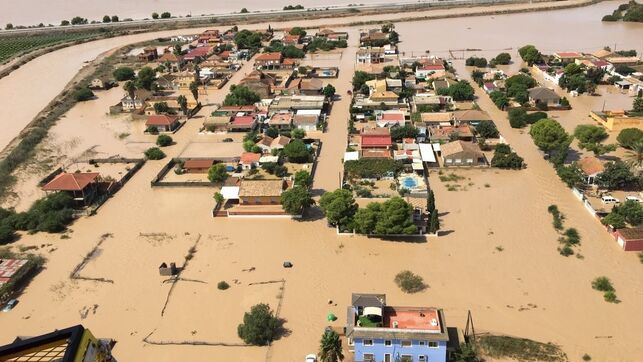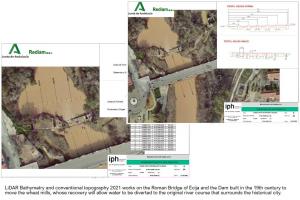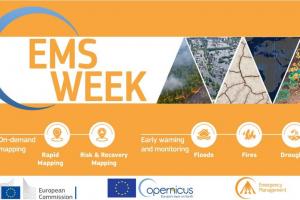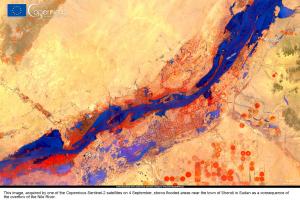Speculation and lack of control over compliance with Land Use Plans regulations in Spain are part of the urban planning malpractice that has favored the floods suffered last September in the southeast of the country, after the floods that in 48 hours have come to collect more than 500 liters per square meter, in the case of Alicante.
This is the opinion of the different specialists consulted by eldiario.es, who clarify that, although the climate crisis cannot still be related to this cold drop – which has already caused the death of six people and the evacuation of several thousand -, in particular, the Mediterranean warming as a result of the global temperature rise will cause these phenomena to occur more and more often and more virulently.
The main problem, according to Santiago Barajas, responsible for Ecologists in Action in the field of water, is that it has been allowed to build on channels and flood risk areas, contrary to the regulations. “We estimate that, throughout the country, there are around 50,000 buildings on riverbeds and risk areas, and most are housing,” says Barajas, who claims to take 25 years claiming that no more construction is allowed and that they be removed the existing ones, as required by article 28 of the National Hydrological Plan.
«On the Mediterranean coast, the urban voracity that has prevailed in the second half of the twentieth century and in what we have been in the 21st century has meant that they do not stop to think about the channels before building, so that there are homes, even urbanizations faces, which are at risk of flooding ».
Barajas describes as “leaving” the attitude with which the Ministry for Ecological Transition (Miteco) has faced this situation, while the channels depend on hydrographic confederations. It denounces that the agency has not guaranteed that the regulation is complied with, but insists that “the fault is not only of the Miteco, but also of the autonomous communities and of the town halls,” whom he accuses of thinking in the short term and of not take measures (such as the demolition of houses built on the channels) for being unpopular.
“But you have to govern thinking about the future of the people,” he says.
Build a pulse to Nature
Antonio Aretxabala, a geologist specializing in building and climate change, also states that “we have to start withdrawing from the areas we conquered when there was that availability of fossil fuels. And we have to do it without seeing it as a defeat ».
Aretxabala’s approach is based on the fact that, since the Second Industrial Revolution, access to cheap and abundant fossil fuels has led Western societies to “believe us gods and believe that we are going to keep nature at bay, so that we have built in places where historically no one had built ».
“We have conquered the riverbanks and are taking a pulse on nature, as if this were a war,” he says.
Aretxabala affects the way in which the speculation on the ground has contributed to worsen the risk of flooding, and puts the example of the municipality of Tafalla, in Navarra, “where the speculation led to create areas with large areas that this summer were flooded , while 30 or 40% of the old houses in the city center are uninhabited ».
Therefore, he suggests “recovering the historical centers for their adaptation to housing and stop speculating with the ground.”
Another of the urban negligence that this expert highlights is the breach of the Land Law, 2008: “Article 15 of this law says that before addressing the land management of a given area – whether for industrial, agricultural or residential–, it must be checked against a risk map. That law exists but is not fulfilled, it is in the drawers of the administrations ».
On the other hand, he points out that the risk maps do not contemplate the climate change variable, so they do not reflect the real risk of flooding in a global warming scenario that is already taking place and, as scientists predict, will aggravate the impacts of natural disasters.
More warming, more flood risk
The cold drop or DANA (Isolated Depression in High Levels of the Atmosphere) is a natural phenomenon of the Mediterranean climate, which usually occurs at this time and that has always been part of the history of this country, says Jonathan Gómez Cantero, geographer and researcher in climate change, in addition to the presenter of El Tiempo in Castilla-La Mancha Media.
However, this specialist warns that climate change will cause much more severe storms in the future. As temperatures are increasing in summer – »and that we have very clear», he emphasizes—, the Mediterranean is warming much more, which makes more water vapor available to condense and to form those storms that affect the Mediterranean coasts
Contrary to what the meteorologist José Antonio Maldonado said Thursday, who denied in a 20-minute interview that the cold drop had “nothing to do” with global warming, Gómez Cantero insists that “you still can’t know” if you happened is related to climate change or not. Not, at least, until an attribution study is done. The problem, according to this expert, is that in Spain these reports are prepared very slowly, so that they can take two months to two years, which hinders awareness of climate change.
“I, as the presenter of El Tiempo, would love to say that this cold drop is a phenomenon associated with climate change, but I can’t because we still don’t have the study,” says Gómez Cantero, and regrets that “still in this country there we are trained to do quick attribution studies and know if it is climate change or not, and that is something that must be made to look at it already because only in this way will we be able to raise awareness in society ».
How to stop the impact of floods
Experts criticize gray infrastructure – for example, the walls that channel rivers – as a solution to stop overflows. They consider that these types of structures are very expensive and are not effective, because before a torrential rain the water ends up overflowing, even taking the work ahead.
In addition, they suggest that channeling infrastructures create a sense of “false security” among the population, when “in fact, the three largest overflows in Spain – that of Biescas, in 1996, that of Badajoz, in 1997, and that of Sant Llorenç, in 2018– occurred in areas where these infrastructures existed, ”says Santiago Barajas.
“The planning of the 21st century has to be much more harmonious with nature, an ecological urbanism, adapted to the geological, topographic, environmental, climatic characteristics … And not based on imposing any decision,” concludes Aretxabala.
In this sense, since Ecologists in Action also propose to restore the affected areas with riverbank vegetation, which reduces the force of the water and alleviates the severity of floods.






